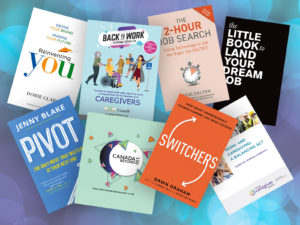Tourette’s syndrome (TS) is a neurological or brain condition that is characterized by a series of tics. These tics take the form of repetitive, involuntary movements and vocalizations.
Individuals with mild TS generally have symptoms that can be treated through education, while those who experience psychological distress, physical pain or interference with social, academic or professional functioning may require medical treatment. Although there is no known cure for TS, there are several behavioural therapies and medications that can help to manage the symptoms.
Treatment options
An intervention for tics called Cognitive/Comprehensive Behavioural Intervention for Tics (CBIT) uses six strategic therapeutic components derived from both cognitive behavioural therapy and traditional habit-reversal techniques. CBIT focuses on increasing a person’s awareness of their tics, and their understanding and management the environmental factors that influence them. It also aims to teach individuals how to effectively block the tic when they sense it is about to happen.
This form of treatment requires active participation from the individual and high tolerance of distress, and is not suitable for everyone. It also requires a deep level of understanding and awareness of one’s tics, and is therefore unlikely to be appropriate for children under the age of 10 years. Lets take a look at other treatment options:
Pharmaceuticals: Each person with TS will respond differently to medical treatment. Not every medication will work for everyone, and so you should always consult your doctor before trying any new drugs. It may take time to determine the best course of medication and the most effective dose.
Botulinum Toxin (Botox) Injection: Botox therapy has been used for both vocal and motor tics. This treatment is still very new, and there have only been a few studies conducted to determine its effectiveness. The effects of the injections are limited to one area of the body and wear off in about three to six months, meaning the costs can quickly add up. In addition, it is necessary to find an administrator trained in the use of Botox.
Transcranial Magnetic Stimulation:
In transcranial magnetic stimulation (TMS), doctors place an electromagnet on the scalp, over the supplementary motor area, and activate it for short periods. This sends pulses of magnetic waves into the brain, with the aim of reducing tics by altering the rhythms in the brain. The technique is still fairly new.
Although TMS is a non-invasive form of treatment it is associated with a risk of seizures, particularly for those who are susceptible to them. It is also a costly treatment and access is limited. Therefore, it is currently not supported by the “Canadian Guidelines for the Evidence-based Treatment of Tourette Syndrome.”
Deep Brain Stimulation:
Deep brain stimulation (DBS) is a relatively new surgical approach that is recommended for individuals whose TS does not respond to medicine and who are experiencing significantly decreased in quality of life as a result of the condition. DBS refers to the direct delivery of electric pulses to the brain to help moderate any abnormal signals associated with the person’s tics. These pulses are released from an electrode that is implanted into the brain and connected to a pulse generator via a cable or lead. These are surgically implanted in the body, leaving the pulse generator to sit in the upper chest.
As this treatment is still in the early stages of testing, the “Canadian Guidelines for the Evidence-based Treatment of Tourette Syndrome” currently state that there is insufficient evidence to make a formal recommendation for the use of DBS in adults. It not recommended for children.
Dental Appliance (Occlusal Splint):
This form of treatment involves the use of a removable mouthpiece or dental appliance to help reduce tic severity. Its effectiveness in reducing tic severity in children is currently being studied. Although TS tics are involuntary, they can be induced in response to both internal forces (e.g., stress, fatigue, excitement) and external factors (e.g., reactions of people around the affected individual, stress-inducing situations). In addition to formal therapies, there are many other modalities and techniques that can help individuals to manage tics that include massage therapy, osteopathy, chiropracty, acupuncture or a hot bath can help relieve the pain and soreness associated with physical tics. Exercise can aid in relieving stress, encouraging sleep and boosting mood and yoga, meditation and relaxation exercises can reduce stress and calm the mind and body.
Tourette Canada offers many kinds of support and is always developing new content to its website. Using the on-line T-search platform you can narrow down your search by province or community to locate specific services to meet your needs. Visit Tourette Canada at tourette.ca.
BY JULIA ABBALLE
Julia Abballe is an Abilities communication intern.





